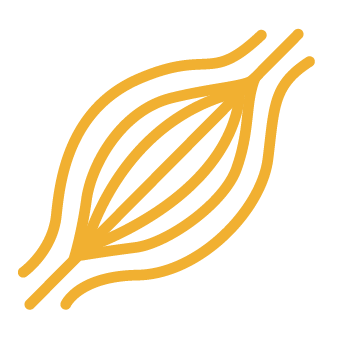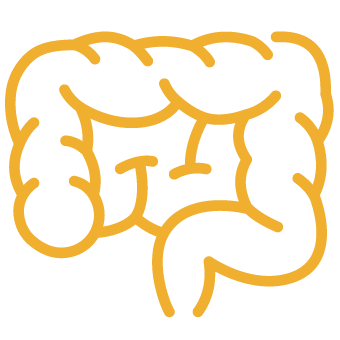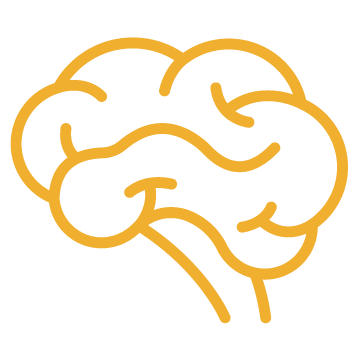Respiratory
When should a respiratory specialist suspect Pompe disease?
The information on this page is tailored for respiratory specialists. For more detailed information on the cause, inheritance, diagnosis and management of Pompe disease, please refer to our ‘About Pompe disease’ page.
Respiratory signs in Pompe disease
One-third of late-onset Pompe disease patients will present with respiratory symptoms as their first manifestation of the illness. Some of these patients will report signs like breathlessness, frequent chest infections and symptoms commonly associated with sleep apnoea, such as snoring, daytime headaches and sleepiness.1 Ineffective cough is also associated with respiratory muscle weakness, reducing airway protection and secretion clearance.2 Over time, sleep apnoea can advance to nocturnal hypoventilation and eventual respiratory failure.2
Patients may develop respiratory signs and symptoms before muscle weakness becomes evident.3 Therefore, suspicion of late-onset Pompe disease by respiratory specialists may be key in establishing the correct diagnosis. Pulmonary function should be evaluated using a forced vital capacity (FVC) test, a measure of respiratory function and one of the most reported outcomes assessed in late-onset Pompe disease.4
Click on the heading to find out more.
- Drop in FVC ≥10% from seated to supine is suggestive of late-onset Pompe disease
- Measurement in both the seated and supine position necessary
- Patients may have a normal seated FVC, and if supine FVC is not measured, diaphragm weakness can be missed
Laboratory testing often reveals elevated creatine kinase levels (hyperCKaemia) early in the disease course, with levels ranging from normal to 15 times the upper limit of normal. Coupled with restrictive respiratory insufficiency, this should raise suspicion of late-onset Pompe disease. Unexplained proximal/axial muscle weakness (with or without respiratory symptoms) is another indicator of disease, which you can find out more about on our ‘Neurology’ page.3,5
Differential diagnoses of Pompe disease
The respiratory symptoms of late-onset Pompe disease can clinically resemble other neuromuscular disorders, as shown in the table below.3,6
| Differential diagnosis | Shared signs/symptoms |
|---|---|
| Selenoprotein N1-related myopathy | Respiratory failure |
| Spinal muscular atrophy | Respiratory failure |
| Lipid storage myopathies | Respiratory involvement |
Other signs and symptoms of Pompe disease
Given Pompe disease is a rare disorder with a wide clinical spectrum, nonspecific initial symptoms and a variable disease course, respiratory specialists need a high index of suspicion to recognise late-onset Pompe disease in clinical practice.3 It is important to be aware of some of the key non-respiratory manifestations, including:2,3

Skeletal muscle
Proximal/axial muscle weakness, hyperCKaemia, motor impairment, reduced mobility; nonspecific complaints of exercise intolerance, muscle pain, fatigue

Musculoskeletal
Scapular winging, osteopenia/osteoporosis, vertebral fractures, rigid/bent spine syndromes, scoliosis /kyphosis/hyperlordosis

Gastrointestinal
Chronic diarrhoea, vomiting, abdominal pain, lack of appetite, early satiety and bowel incontinence

Cerebrovascular
Aneurysm formation, haemorrhage, stroke, vascular, stiffness leading to increased blood pressure

Cardiac
Rhythm disturbances, cardiac hypertrophy

Nervous system
Paraesthesia, burning feet
Please refer to the ‘About Pompe’ page for further information on the signs and symptoms of Pompe disease.
If you suspect Pompe disease, referral to nominated ultra-specialist centre is essential so that patients can access full genetic testing and access to disease-specific therapies. Please refer to our ‘Find a specialist centre’ page to find out more.
NP-NN-GB-00021223
October 2024
- Shah NM, Sharma L, Ganeshamoorthy S, Kaltsakas G. Respiratory failure and sleep-disordered breathing in late-onset Pompe disease: a narrative review. J Thorac Dis. 2020;12(Suppl 2):S235-S247.
- Toscano A, Rodolico C, Musumeci O. Multisystem late onset Pompe disease (LOPD): an update on clinical aspects. Ann Transl Med. 2019;7(13):284.
- Ozdamar SE, Koc AF, Durmus Tekce H, et al. Expert opinion on the diagnostic odyssey and management of late-onset Pompe disease: a neurologist’s perspective. Front Neurol. 2023;14:1095134.
- Berger KI, Kanters S, Jansen JP, et al. Forced vital capacity and cross-domain late-onset Pompe disease outcomes: an individual patient-level data meta-analysis. J Neurol. 2019;266(9):2312-2321.
- American Association of Neuromuscular & Electrodiagnostic Medicine. Diagnostic criteria for late-onset (childhood and adult) Pompe disease. Muscle Nerve. 2009;40(1):149-160.
- Musumeci O, Toscano A. Diagnostic tools in late onset Pompe disease (LOPD). Ann Transl Med. 2019;7(13):286.


